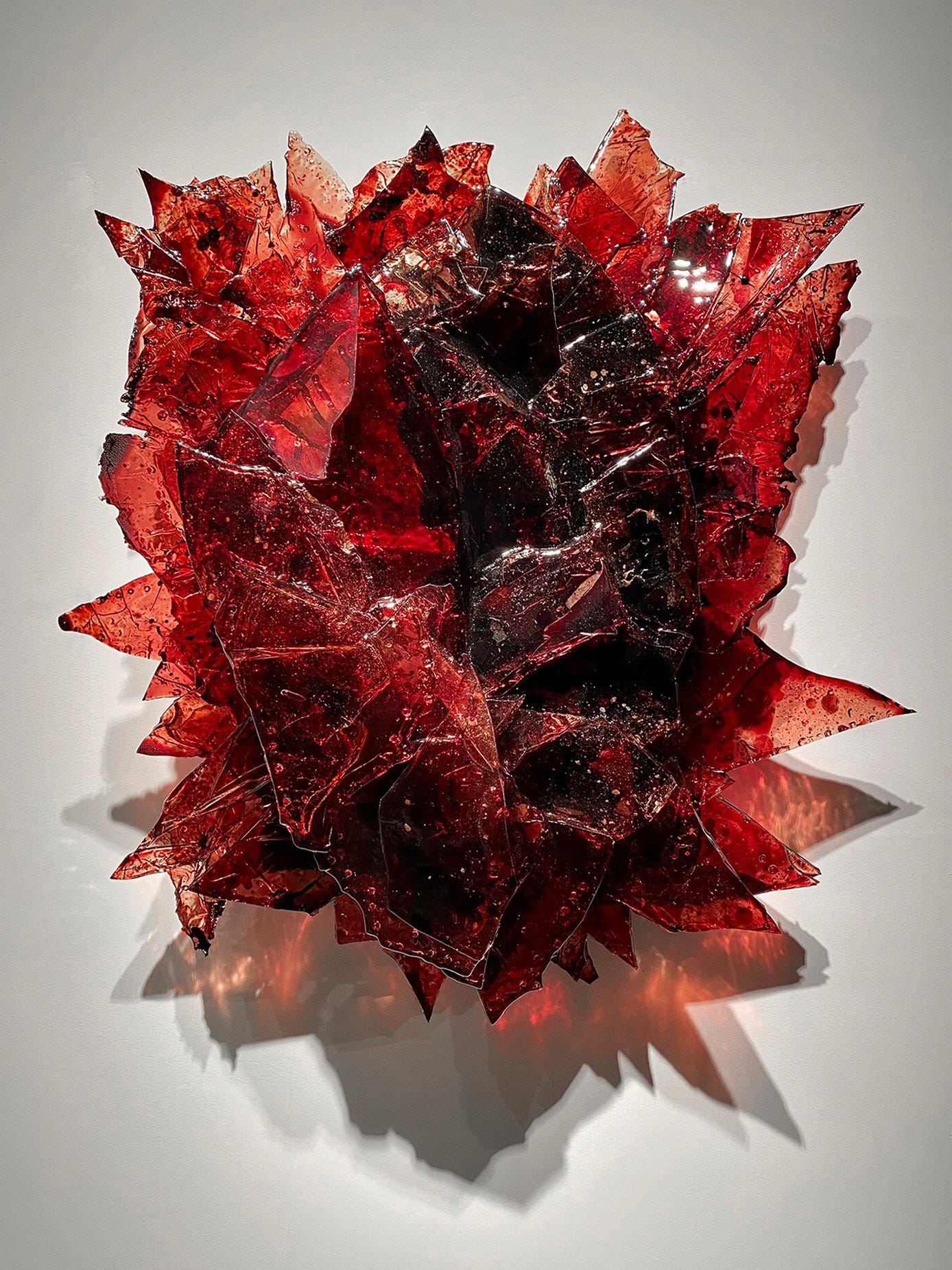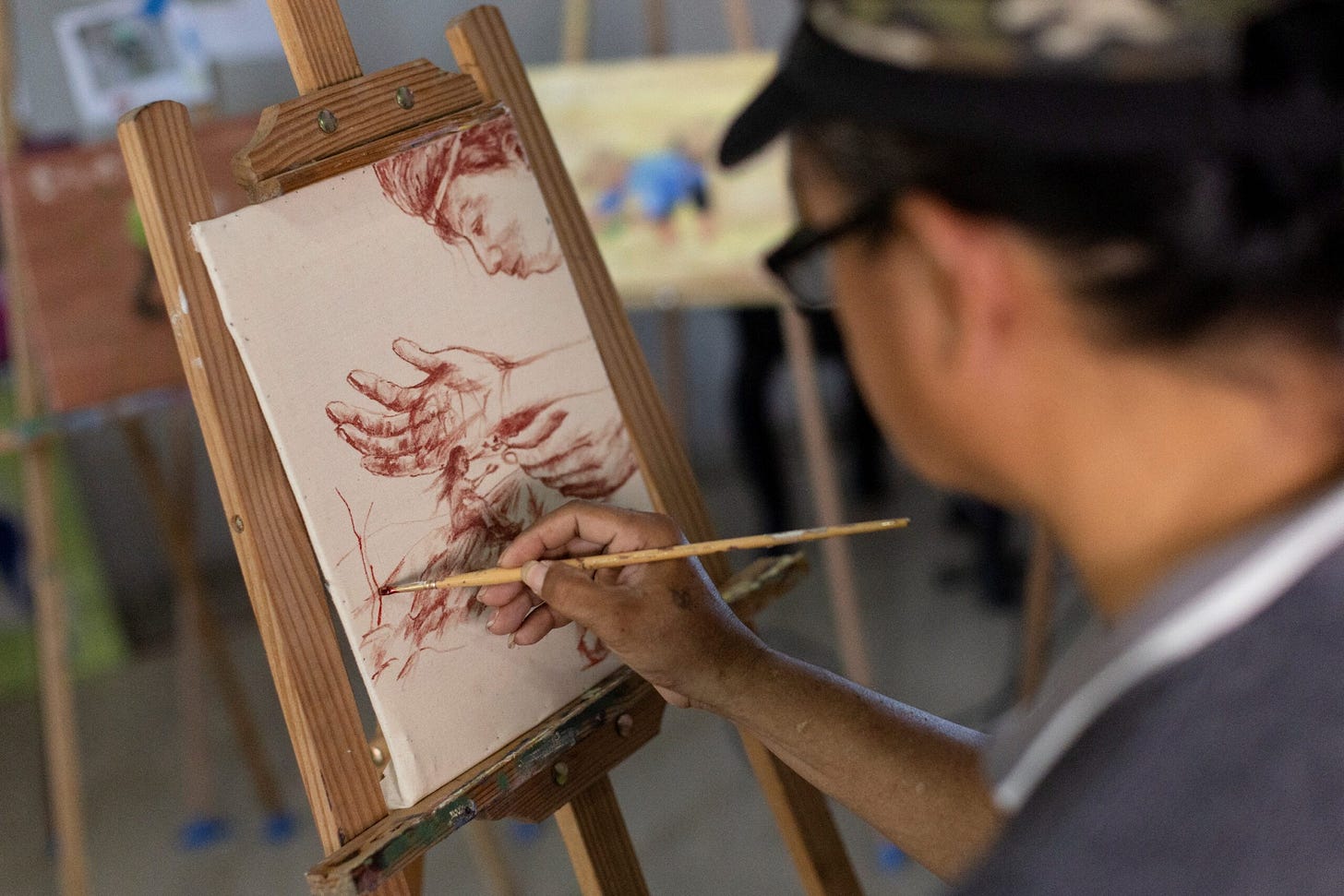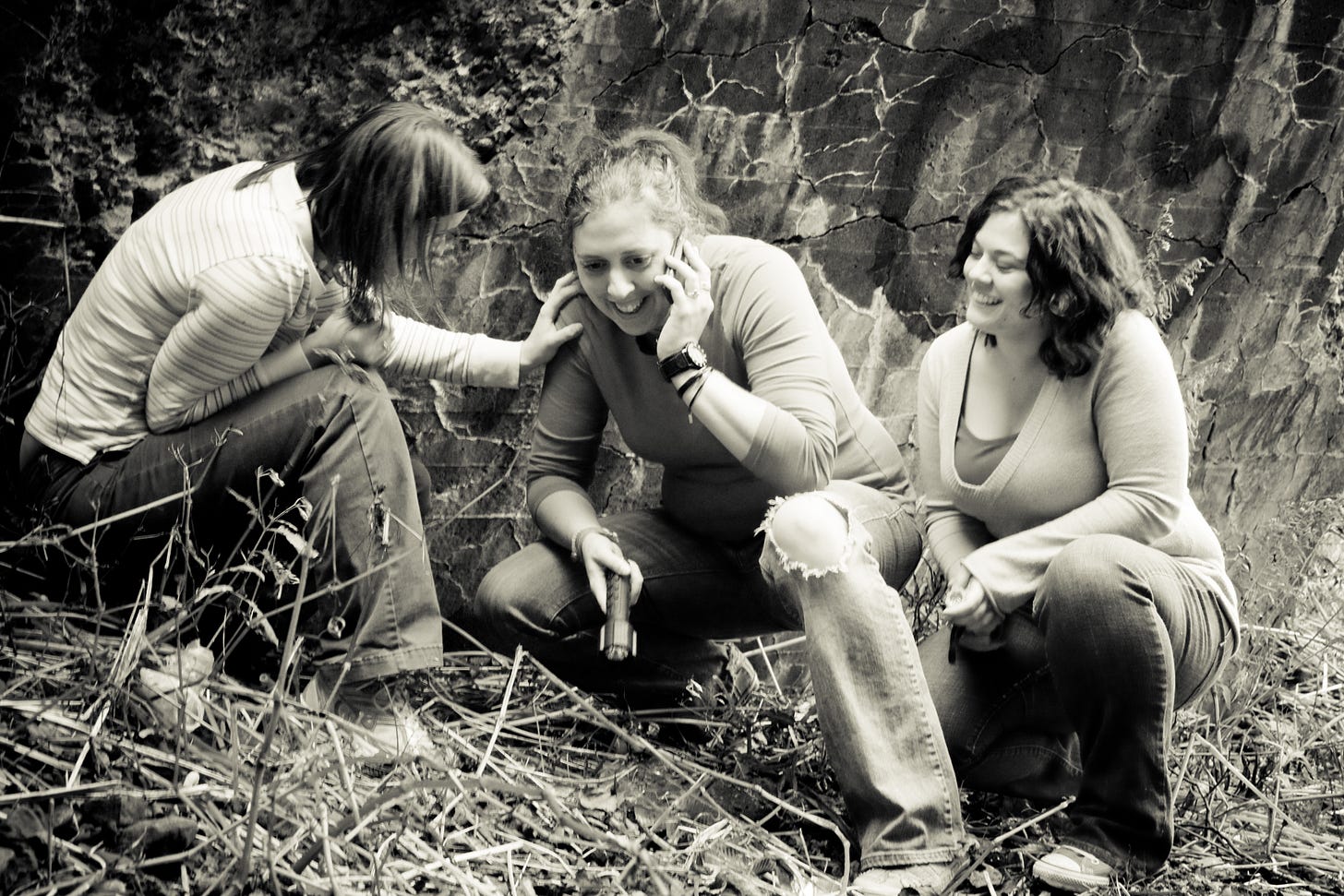If You Can’t Source Sacrificial Human Blood, Store Bought is Fine. (#81)
On bloody vulnerability; the last in the 2023 Spooky Science series
As the wind whips off of the harbour, I pull my vest and sweater closer. The air is a bass line, brown noise, that underlies the floating voices around and through the abandoned fort - a searchlight from wars past.
Squinting to make out the six shadowed faces in front of me, I steady my nerves. The group gathered under this decaying, graffiti-strewn construction at my bidding, and are all patiently waiting for further instructions. Another three bodies cluster close behind me, armed to the teeth with their chosen gear.
“We should have made more plans,” I thought to myself uneasily. “We should have made a plan.”
Too late now. I let out a breath I didn’t know I was holding, and spoke:
“Well, which one of you wants to die first?”
In the costume section of any dollar store (pound shop), or the more extravagant Spirit Halloween chain store that has gained a cult status in North America, you’ll find blood.
Not real blood, of course. But fake blood, and in any quantity, you desire. Depending on your price point, the quality will vary. Sometimes, it’s a gel that can slowly drip down the sides of a mouth or chin. Or there are thinner formulations that lend themselves better to a decorative arterial splatter. They all resemble, though, a brighter, oxygenated blood - the type that is pumped from your heart and lungs outwards to the body for its’ nourishment. Arterial delicacies - that, if it were real blood, would become darker as the oxygen is drained by our body’s cells.
This tint, perhaps, makes it easier to manage, mentally. It’s not the same as the stuff pumping through our body; the nigh-cartoonish red places it a step removed from having to consider any real injury. Any possible vulnerability.
To extend from last week’s post - to use art to disturb the comfortable - and to travel to the extreme, you would arrive at blood art.
Yes, using animal, or even human, blood, to create works of art.


We only have so much blood at any given time, and it takes time to regenerate from any loss1, so why use it in a piece of art - in a novelty that cannot sustain life? We also know more than ever post-pandemic what it means to be exposed to disease; in some of the examples out there of blood art, it poses the very real danger of being infected with something.
In the ’90s, [Teresa Margolles] started to go inside morgues in Mexico City and bringing body remains of people who had a violent death and whose cases were lost in the darkness of the morgue, to art institutes. In her pieces, Vaporización (2002) and En el Aire (2003), Margolles confronts the visitor with dead in an unusual way… The first work concerns a room full of steam, where you walk through a dense fog that fills the gallery and that produces a visual, tactile and olfactory experience of density. Later, you learn that this mist comes from the vaporisation of disinfected water that was used to clean corpses of drug war victims in Mexico.2
I’m pretty liberal when it comes to art - but, no, thank you.
Why does blood art have such potential to disturb our comfort? Perhaps it’s because the use of such a precious, personal resource highlights our individual vulnerability.
I wasn’t buying pig blood or procuring human donation, though. I needed blood on a grad student budget3 . The Internet in 2009 was less replete with fake blood listicles, but eventually I settled on a blend of corn syrup (for its’ viscosity), red food dye, and cocoa powder (for a less cartoonish tone). Perhaps, subconsciously, to highlight more vulnerability - although why I would want to do that, I can’t recall. It wasn’t that I lacked for support. I messaged a couple photographer friends, who were immediately game. Finding victims models was little trouble, too; I’m very fortunate to have supportive friends and family, some of whom just really like Halloween. The fort needed little in the way of set dressing; being a popular party spot attracted decay (or vice versa).
But I was already disturbing my comfort by hosting this event. I had seen a similar event the previous year but wanted a more active role in curating a tableau. I had been dismissed in those earlier events, relegated to coffee runs and holding lighting4. I had no training in art whatsoever, but I wanted to create art, and I wanted to be seen as an artist.
I realize in hindsight, though, that the vulnerability was likely shared amongst the nine young adults who gathered to essentially “play” one Saturday morning in October. Once the initial discomfort of sharing ideas fell to the background, the ideas and energy flew around like that wind off the harbour:
“What if I sneak up behind her with the knife and surprise her?”
“What if the girls crowd in the dark corner of the fort with the light angled across from them?”
“OOOOH what if the two killers fight to the death and I fall to my death and get impaled below on that steel spike?”
Through shared humanity and play, we touched the edges of mortality and shared fears, though we were babies still: before kids, before marriages, before losses.
We played with notions of real vulnerability - pierced organs! Blood splattered on rocks! - and through that, allowed our young selves to be vulnerable with each other.
What is art, if not vulnerability of ideas and selves?


A few weeks ago, I went back to the fort. The road to it is now closed as private property - I imagine the adjacent Canadian National rail company finally tired of people passing through their fields to access the forts from above. You can still access it from below by walking along Bayshore Beach, about a kilometre.
It’s still standing, albeit with more decay and rot, and with fresh graffiti over our original set pieces.
It could have used a bit of blood, though.
Up to a point, of course; too much loss results in shock and death.
Baptiste G, M. Traces of death in the work of Teresa Margolles.
Read: lim —> 0
These are very important tasks, and I don’t consider them to be “lesser than”. I just prefer a more equal balancing of power: If someone has a good idea, then give space to it, regardless of titles or training.





*shudders* 😁
This whole series was a killer, Bryn. ☠️☠️☠️ That's a good thing. 😁